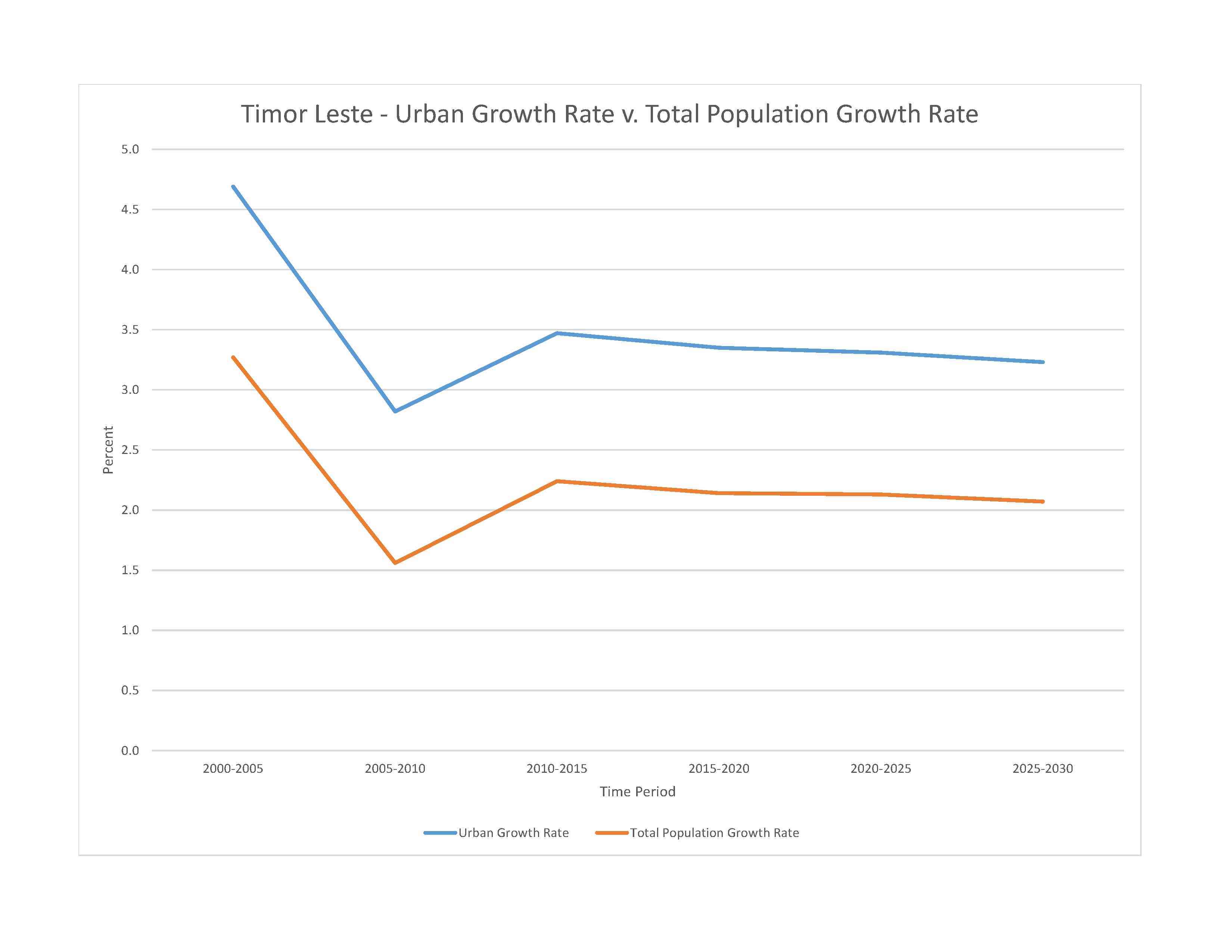
1,476,042 (2023 est.)
noun: Timorese
adjective: Timorese
Austronesian (Malayo-Polynesian) (includes Tetun, Mambai, Tokodede, Galoli, Kemak, Baikeno), Melanesian-Papuan (includes Bunak, Fataluku, Bakasai), small Chinese minority
Tetun Prasa 30.6%, Mambai 16.6%, Makasai 10.5%, Tetun Terik 6.1%, Baikenu 5.9%, Kemak 5.8%, Bunak 5.5%, Tokodede 4%, Fataluku 3.5%, Waima'a 1.8%, Galoli 1.4%, Naueti 1.4%, Idate 1.2%, Midiki 1.2%, other 4.5% (2015 est.)
note: data represent population by mother tongue; Tetun and Portuguese are official languages; Indonesian and English are working languages; there are about 32 indigenous languages
Roman Catholic 97.6%, Protestant/Evangelical 2%, Muslim 0.2%, other 0.2% (2015 est.)
Timor-Leste’s high fertility and population growth rates sustain its very youthful age structure – approximately 40% of the population is below the age of 15 and the country’s median age is 20. While Timor-Leste’s total fertility rate (TFR) – the average number of births per woman – decreased significantly from over 7 in the early 2000s, it remains high at 4.3 in 2021 and will probably continue to decline slowly. The low use of contraceptives and the traditional preference for large families is keeping fertility elevated. The high TFR and falling mortality rates continue to fuel a high population growth rate of nearly 2.2%, which is the highest in Southeast Asia. The country’s high total dependency ratio – a measure of the ratio of dependents to the working-age population – could divert more government spending toward social programs. Timor-Leste’s growing, poorly educated working-age population and insufficient job creation are ongoing problems. Some 70% of the population lives in rural areas, where most of people are dependent on the agricultural sector. Malnutrition and poverty are prevalent, with 42% of the population living under the poverty line as of 2014.
During the Indonesian occupation (1975-1999) and Timor-Leste’s fight for independence, approximately 250,000 Timorese fled to western Timor and, in lesser numbers, Australia, Portugal, and other countries. Many of these emigrants later returned. Since Timor-Leste’s 1999 independence referendum, economic motives and periods of conflict have been the main drivers of emigration. Bilateral labor agreements with Australia, Malaysia, and South Korea and the presence of Timorese populations abroad, are pull factors, but the high cost prevents many young Timorese from emigrating. Timorese communities are found in its former colonizers, Indonesia and Portugal, as well as the Philippines and the UK. The country has also become a destination for migrants in the surrounding region, mainly men seeking work in construction, commerce, and services in Dili.
0-14 years: 39.05% (male 296,331/female 280,029)
15-64 years: 56.61% (male 408,662/female 426,897)
65 years and over: 4.34% (2023 est.) (male 30,856/female 33,267)
total dependency ratio: 90.3
youth dependency ratio: 59.4
elderly dependency ratio: 8.9
potential support ratio: 11.2 (2021 est.)
total: 20.3 years (2023 est.)
male: 19.6 years
female: 21.1 years
2.1% (2023 est.)
30.4 births/1,000 population (2023 est.)
5.6 deaths/1,000 population (2023 est.)
-3.8 migrant(s)/1,000 population (2023 est.)
most of the population concentrated in the western third of the country, particularly around Dili
urban population: 32.5% of total population (2023)
rate of urbanization: 3.31% annual rate of change (2020-25 est.)

281,000 DILI (capital) (2018)
at birth: 1.07 male(s)/female
0-14 years: 1.06 male(s)/female
15-64 years: 0.96 male(s)/female
65 years and over: 0.93 male(s)/female
total population: 0.99 male(s)/female (2023 est.)
23 years (2016 est.)
note: data represents median age at first birth among women 25-49
204 deaths/100,000 live births (2020 est.)
total: 32.9 deaths/1,000 live births (2023 est.)
male: 36.1 deaths/1,000 live births
female: 29.5 deaths/1,000 live births
total population: 70.2 years (2023 est.)
male: 68.6 years
female: 72 years
4.09 children born/woman (2023 est.)
1.98 (2023 est.)
26.1% (2016)
improved: urban: 98% of population
rural: 82.5% of population
total: 87.4% of population
unimproved: urban: 2% of population
rural: 17.5% of population
total: 12.6% of population (2020 est.)
9.9% of GDP (2020)
0.76 physicians/1,000 population (2020)
improved: urban: 88.7% of population
rural: 56.1% of population
total: 66.3% of population
unimproved: urban: 11.3% of population
rural: 43.9% of population
total: 33.7% of population (2020 est.)
degree of risk: very high (2023)
food or waterborne diseases: bacterial diarrhea, hepatitis A, and typhoid fever
vectorborne diseases: dengue fever and malaria
3.8% (2016)
total: 0.41 liters of pure alcohol (2019 est.)
beer: 0.27 liters of pure alcohol (2019 est.)
wine: 0.09 liters of pure alcohol (2019 est.)
spirits: 0.05 liters of pure alcohol (2019 est.)
other alcohols: 0 liters of pure alcohol (2019 est.)
total: 39.2% (2020 est.)
male: 67.6% (2020 est.)
female: 10.8% (2020 est.)
31.9% (2020)
55.9% (2023 est.)
women married by age 15: 2.6%
women married by age 18: 14.9%
men married by age 18: 1.2% (2016 est.)
4.2% of GDP (2020 est.)
definition: age 15 and over can read and write
total population: 68.1%
male: 71.9%
female: 64.2% (2018)
one of only two predominantly Christian nations in Southeast Asia, the other being the Philippines
NOTE: The information regarding Timorleste on this page is re-published from the 2024 World Fact Book of the United States Central Intelligence Agency and other sources. No claims are made regarding the accuracy of Timorleste 2024 information contained here. All suggestions for corrections of any errors about Timorleste 2024 should be addressed to the CIA or the source cited on each page.
This page was last modified 04 May 24, Copyright © 2024 ITA all rights reserved.